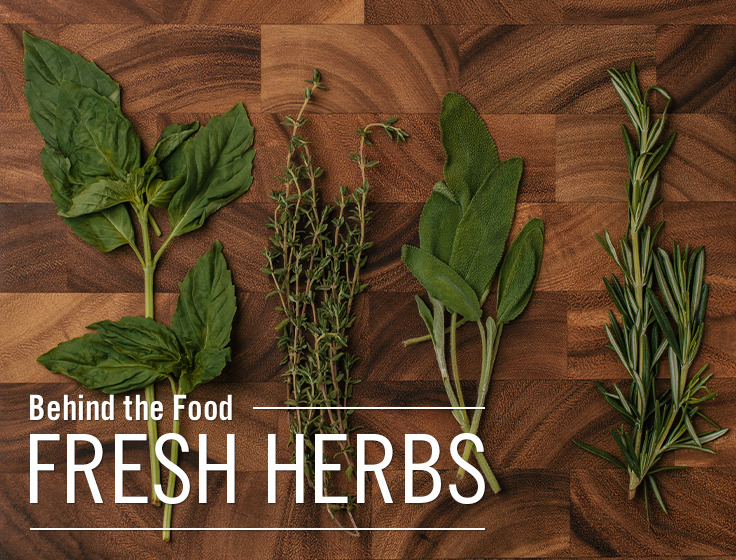How to give your recipes the freshest taste
Give your meal a flavor boost with fresh herbs! Lunds and Byerly’s offers a wide variety of fresh, sustainably-grown herbs from a local farm in Iowa.
Fresh herbs add remarkable depth of flavor to any recipe. Turkey is delightful when prepared with fresh rosemary, thyme or sage. And nothing beats homemade stuffing made with fresh parsley and sage leaves. For suggestions on how to use other fresh herbs, check out our expert guide to fresh herbs.
If you have leftover herbs, don’t worry; it’s easy to keep them for later use by freezing them or drying them.
To freeze your herbs, simply divide them up in ice cube trays and fill each section with a little bit of olive oil. Later, when you want to use them, you can just put a cube or two directly into your sauté pan. However, bear in mind that this method only works for hard herbs such as rosemary, sage, thyme and oregano – herbs that you would normally cook when adding to a dish. Since soft herbs, such as mint, basil, lemon verbena and dill, are normally added to a dish raw, freezing is not recommended.
To dry your herbs, you can simply hang them in small bunches, leaves downward, wrapped loosely in muslin or thin paper bags to keep out dust. Do not use plastic bags, as your herbs may mold. Allow seven to 10 days to dry. You can also dry herbs in the oven at the lowest possible temperature for about an hour.
One thing to keep in mind: Drying concentrates the flavors, so you won’t need to use as much in your recipes. So if your recipe calls for 1 tablespoon of fresh herbs, you only need to use 1 teaspoon of dried herbs.
Look for fresh herbs in our produce department.
Sources:
The Kitchn
Taste of Home






